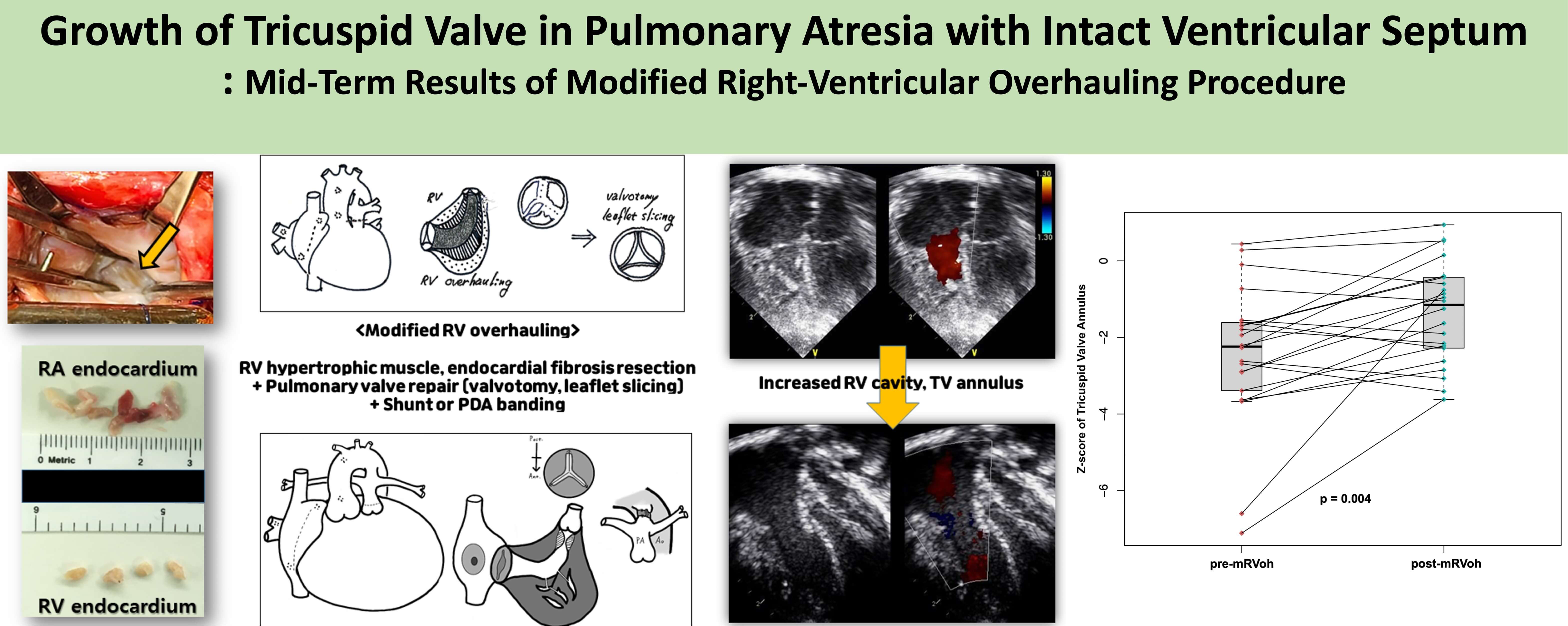 Open Access
Open Access
ARTICLE
Role of Surgery on Growth of Tricuspid Valve in Pulmonary Atresia with Intact Ventricular Septum: Mid-Term Results of Modified Right-Ventricular Overhauling Procedure
1 Department of Thoracic and Cardiovascular Surgery, Seoul National University Children’s Hospital, College of Medicine, Seoul National University, Seoul, Korea
2 Department of Thoracic and Cardiovasclar Surgery, Sejong General Hospital, Bucheon, Gyeonggi, Korea
* Corresponding Author: Woong-Han Kim. Email:
Congenital Heart Disease 2023, 18(3), 325-336. https://doi.org/10.32604/chd.2023.027758
Received 14 November 2022; Accepted 04 May 2023; Issue published 09 June 2023
Abstract
Objectives: To access the effectiveness of our modified right-ventricular overhauling procedure on tricuspid valve (TV) growth in patients with pulmonary atresia with intact ventricular septum (PAIVS). Methods: We retrospectively reviewed 21 patients with PAIVS who underwent modified right ventricular overhauling (mRVoh) between 2008 and 2019 at two institutions. Our mRVoh consisted of wide resection of hypertrophied infundibular and trabecular muscle, peeling off fibrotic endocardial tissue in the right ventricle (RV) cavity, surgical pulmonary valvotomy, and Blalock-Taussig shunt or banding of ductus arteriosus under cardiopulmonary bypass. The TV annulus sizes were measured and analyzed using echocardiography before and after mRVoh. Results: No mortalities were observed during a median follow-up of 3 years (interquartile range: 1.3–4.7 years) of follow-up were noted. mRVoh was performed at a median age of 163.5 days (range: 21–560 days), including seven neonates and two infants (<60 days). During follow-up, the median TV annular z-score increased significantly from −2.24 to −1.15 before and after mRVoh (p = 0.004). In ten patients with a prior history of percutaneous interventions for RV outflow tract (RVOT) widening at least 6 months before mRVoh, the TV annular z-score significantly changed during the period after mRVoh (−2.03 to −1.61, p = 0.028) compared with the period before mRVoh (−2.51 → –2.03, p = 0.575) after percutaneous intervention only. Conclusions: mRVoh in PAIVS patients was positively associated with TV annular growth, and it was more effective than percutaneous RVOT widening interventions without mRVoh.Graphic Abstract

Keywords
Cite This Article
 Copyright © 2023 The Author(s). Published by Tech Science Press.
Copyright © 2023 The Author(s). Published by Tech Science Press.This work is licensed under a Creative Commons Attribution 4.0 International License , which permits unrestricted use, distribution, and reproduction in any medium, provided the original work is properly cited.


 Submit a Paper
Submit a Paper Propose a Special lssue
Propose a Special lssue View Full Text
View Full Text Download PDF
Download PDF Downloads
Downloads
 Citation Tools
Citation Tools